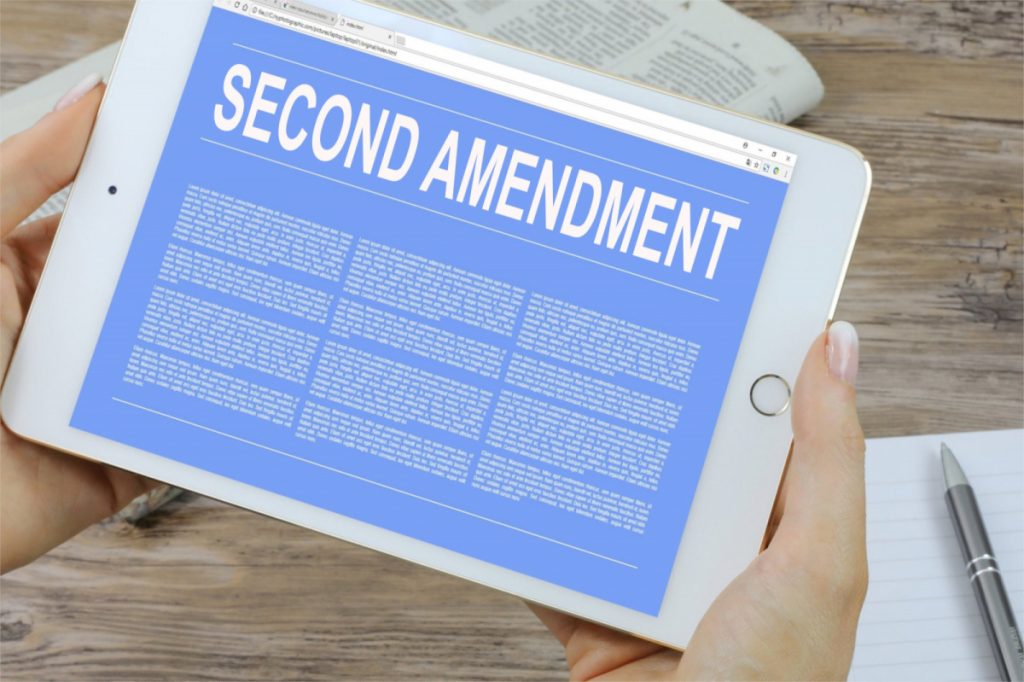
Image Credit: Nick Youngson CC BY-SA 3.0 Pix4free
By Saul Roth
There are those that believe the Heller decision did not go far enough. Many believe that because the Court did not give any standard of review, a lot is left to the lower courts for interpretation. But many also believe this ruling will break the stalemate between the anti-gun and pro-gun lobbyists (Reynolds, 2008). Even though I think the decision is a good starting point for further discussion, it seems to have given the pro-gun lobbyist more fuel for their point of view
As stated earlier I do not believe the intention of the 2nd Amendment was to let citizens bear arms solely for self-defense. I believe the Amendment was more directly related to an armed militia. Still many citizens in the United States do not interpret it that way. The Court is also now moving in a more conservative fashion. The right- to- bear arms proponents believe that bearing arms for self-defense is an ancient right. They believe this right dates back to Gratian’s (Roman Emperor) “Treaties of the Discordant Canons” Gratian believed in “repelling force by force”. The chain of this right was to continue for hundreds of years through basic English law ( Kopel, 2010).
Kopel believes the 1689 English Declaration of Right was the predecessor for the 2nd Amendment. This English right allowed Protestants to have a defense in place suitable for their conditions. In the Heller decision, Justice Stevens dissented, saying that the founders were mainly interested in state powers versus federal powers (Kopel, 2010). What Stevens was saying was that the new government was paranoid and fearful of a large federal government. They had just gone through years of tyranny under English rule.
Even though the United Nations does not have much power, they do speak for the world sometimes. The United Nations believes self-defense is not a right. The United Nations seeks to outlaw all private ownership of guns(Kopel, 2010). I am not as extreme. This is an unrealistic concept, especially in those countries where you cannot depend on the military or the police. Kopel hopes the Heller decision will have worldwide consequences.
The McDonald decision made the Heller decision applicable to the states. The McDonald case was actually an incorporation of several suits. Two of these cases were from the National Rifle Association. Like the Heller decision, the Supreme Court in McDonald still did not offer a level of scrutiny. Neither Heller nor McDonald addressed other purposes for gun possession, such as hunting, target practice, gun collecting, etc. (Habib, 2012).
The issue on the different reasons for gun possession will eventually be decided by the U.S. Supreme Court. For now, that decision is up to the discretion of the lower courts. There are other laws that also need to be examined today. The one- gun- a- month law was instituted so persons in states with less strict gun laws would not be able to buy large quantities of guns and transport those guns to states with more restrictive gun laws. Now gun activists believe that more than one gun a month can be needed to defend their homes. A person can live in a large home and want a gun on more than one floor or in more than one room.
Habib believes that common sense should be used in gun prohibition. If he believes that purpose is viable, then gun sales can be made on a case-by-case using a common sense approach. Habib himself states that someone dies every seventeen minutes from gun violence. He then states only 18 % of guns made in the U.S. are used in crimes. (Habib, 2012) I believe 18% is a very high number and the study does not count guns made outside the U.S. and brought into the country.

Recent Comments